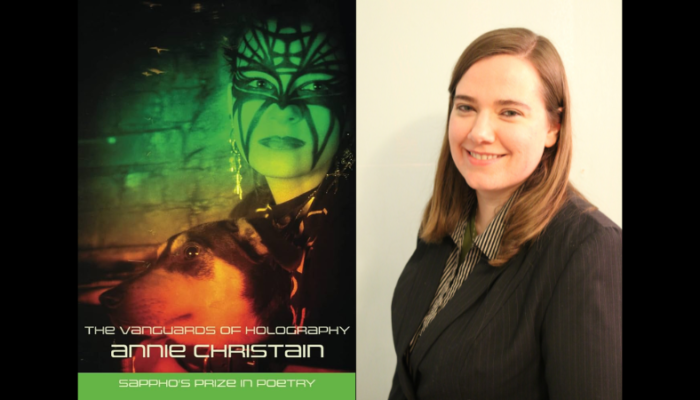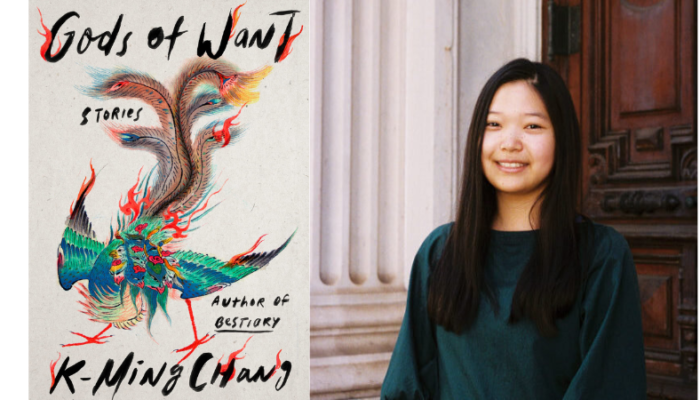Love brings death closer. The collapsing space between is the setting of Irene Silt’s My Pleasure (Deluge Books, 2022). Silt’s poems occupy the protracted time of wanting and waiting, elaborating the delay between desire and arrival—consummation of love or death. Illuminations strobe over a shadow world where oppositions melt inside one another:
I am so angry at you, I would save your life
I would force you to live again, without me
You gave me a complex. You gave me
the utter certainty that the ways
of the underworld are perfect. (24)
In Silt’s poetics, the gloss of subterranean perfections lacquers pain and rage with the same sheen as a good fuck. My Pleasure offers a study of modes and methods that dislodge a person from constraints of linear time and legible subjecthood.
This is a book of secrets, which “fold over / Fold inside, anxiety in the signs” (11). Desire is marked by violence; desire exerts terrible pressure on hegemonic structures, stressing systems that resist expression, and troubling the tension between concepts of liberation and bondage. Time materializes in the dynamics of pleasure, which in turn map subaltern bodies inside geographies of erotics and love. The text bodies forth a precise ethic that dissolves political, aesthetic, relational, and erotic concerns inside imagistic liquidities.
Manipulations of time are primary among Silt’s power plays; available utopias are encircled as flickering scenes, and the resulting assemblage of static moments renders complex synchrony. Silt stacks the poem’s present with a future of fractal potentialities, saturating the parallax between self and other with an infinite past. Silt writes, “Brought you to all the shores of all / the water, tried to triangulate my / memories through you” (13). The second person is brought to the edge, and all surfaces are found to be reflective; thus, water beholds more water. Bodies are held together (and apart) by their shores, toward some incomplete synthesis: a geometric shape (like a poem) that is defined by its edges and center and relation to the outside, to other forms. As a reader, I found myself on a different shore, my own desire interpolated in the work, and triangulated with the text’s first and second person voices. Silt’s images anchor theoretical musings within a broader framework: they sketch out a paradoxical territory for arrival inside departure and loss. I was inside that space and wanting; my reading was made possible by the emptiness of solitude.
I considered interviewing Silt for this review; at first I thought dialogue was the best form to use in approaching this book. But an interview demands the presence of the interlocutor, and expectations of sustained mutual presence seems counterthetical to the syncopated erotics of Silt’s premise. The central prompt of My Pleasure pushes toward a riskier exchange—prolonging the mutual aloneness implicit in writing, reading, looking out across an expanse of private desire.
Desire sutures the present to the future—and yearning may leave a subject off balance. Silt explores this strange mechanism: one might reach for another, or a more numinous satisfaction beyond an object of desire. The speaker yields to the exposure, the nonsense, the aesthetics of this instability; the poem, as a technology, prolongs these fleeting sensations. It articulates separations in order to behold the self and reality in prismatic, momentary revelation. Silt’s timecode marks pleasurable thrust, a push and pull, or stroking touch. The void left behind after loss—the other’s departure—is as penetrable as any orifice. Reaching across difference and distance, between bodies, thus produces spatiotemporal architecture, and Silt finds language to occupy it.
The musculature of longing flexes and fails, revealing the oscillating strength and weakness of language or love as a vessel, vehicle, or ground: “Writing on you has allowed the return to a site. I rests on you, falls asleep and leaves the earth. I have understood something about the placement of my body specifically in relation to her, the ground” (69). Description does not linger on images or attachments—so much as it obsesses over orientation—so the index of subjectivities is partial, blurred, and marked by absence. The intrinsic trick of sex and speech does not undermine the value of these modes, but rather expresses true reverence for intelligences that shift, change, and resist lucid representation.
Silt’s mutable second person addressee is a merciful inclusion in that they offer an armature for the titular protagonist; My Pleasure is oriented toward You. Instead of serving as a stable character, however, this second person becomes a shifting reference point that anchors reality in relation to the self of the poems. “Now I will move all my objects closer to you,” Silt writes; the speaker situates themself inside their own consensus, refusing conventional narratives that govern thought and behavior in this world (16). My Pleasure disidentifies with money, with linear time, with language even, using each of the aforementioned media almost interchangeably: as currency, as metronome, as a vehicle for communication. These objects and systems are assembled inside a contested question of centrality in this life (“What I thrust aside / in order to live” [12]). Silt’s poetics rehearse Sara Ahmed’s theorizing around the role of the other in labors of queer orientation, by which some lives are centrally defined by the very act of thrusting (aside). Ahmed contours the spatial consequences of perverse desire, which press against the “straightening devices” of compulsory heteronormativity. Under the latter, linear “utterance perform[s] the work of alignment” in narrative gestures such as marriage, or “becoming a father” (83). Instead, Silt performs, in Ahmed’s words, “an intimacy that feels like inhabiting a secret room that is concealed from the view of others” (11)1. In order to access it I go slowly, relax my muscles and attention, and submit to the world I am offered passage through.
I am aware my writing here pursues a forwardness almost antagonistic to the ethic of My Pleasure, which takes kinetic pleasure in an oblique approach. A sentence uses names to penetrate meaning. I wonder if these sentences here betray or refuse the invitation made by the book’s dark and recursive poetics, which invite their reader into close parallax to behold fleeting and obfuscated scenes. Coming to all the shores of all the water, offering generously to show me, to drag me inside their memories, and other modes of intimacy. Silt’s modes of sedimentation do not actually require material logic to build form. Language is processed through permeating affect and accumulated images, toward a poetics that mobilizes pleasure to dismantle the lethal threats of simple understanding in a world of complexity.
I could use simpler descriptions. I lay out and read the book between one night and day. The sun sets, I start again. I package my copy and send it through the mail. Following departure, it comes back marked. It is read aloud to me in two living rooms and two public places. I write to it. I address the question of pleasure every day before I encounter you. I understand I address the unanswered question every day since.
The book reminds me of myself, it reminds me of my own life. I am the speaker and the second person. It is my pleasure, it is my indescribable pursuit. I find myself inside exclusive assertions: “They don’t have what we have / Long limbs so we circle / unable to take each other down” (15). The impossibility is imagined, and the description negates itself: here, in the text, we are taken down, we are suddenly able to do that. Silt fashions time into language and lines—a present tense, a past, and the protracted, projected, trouble of the future—and then lacerates the skin of these temporal containers. The present bleeds outside its extended edge, the moment bloodies the page. The poem captures this immanence as seepage toward false permanence:
Better than the physical
presence of a higher being
takes me here puts me
here and keeps me here
longer than you could
ever imagine as time at all (11).
I know the devotional object Silt describes here, but I can’t write it down or say it out loud. The relation itself resists capture, but it endures beyond concept of time or god or imagination–it is better than all that, and it lasts longer.
1Ahmed, Sara. Queer Phenomenology: Orientations, Objects, Others. First Edition. Durham: Duke University Press Books, 2006.
My Pleasure was published on October 2, 2022 by Deluge Books.




